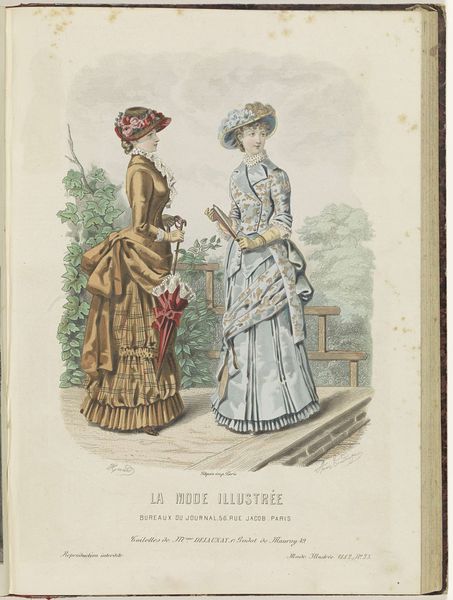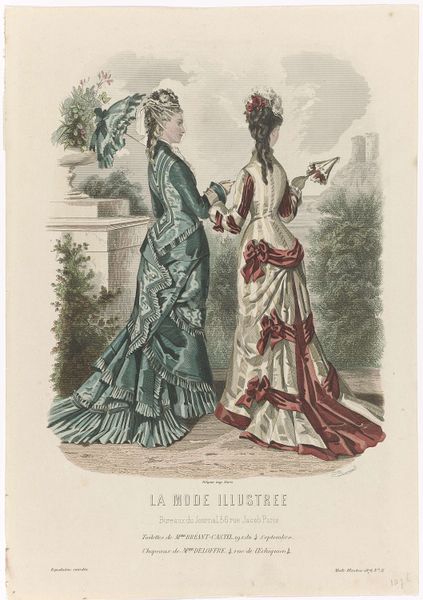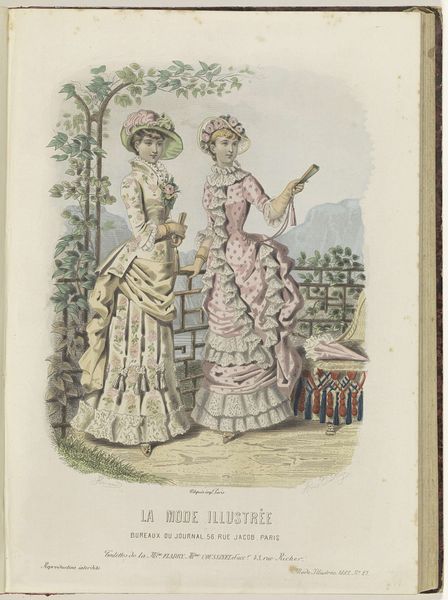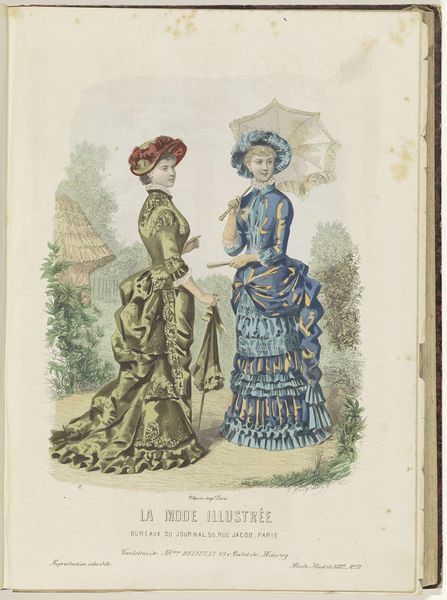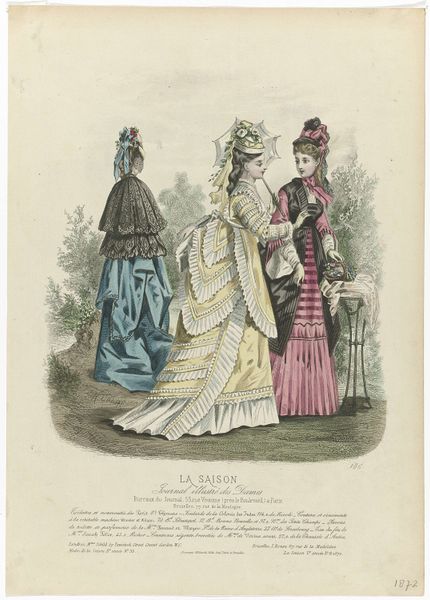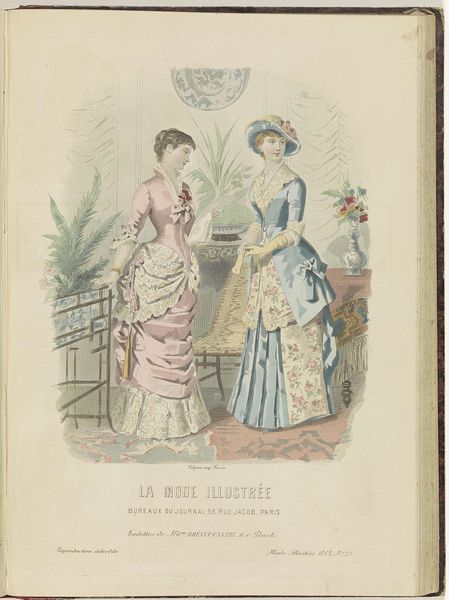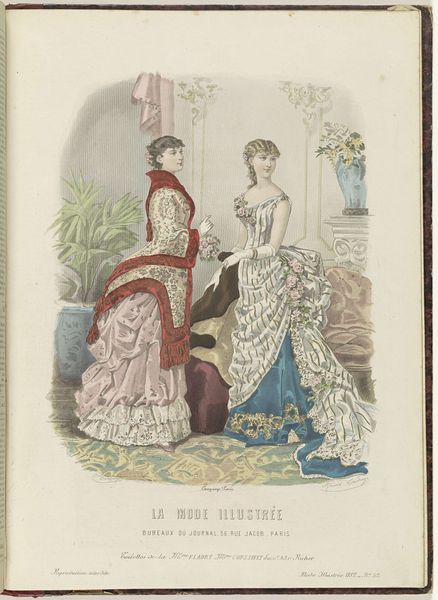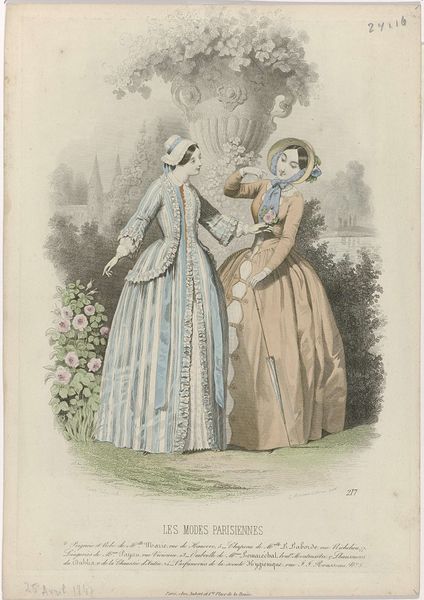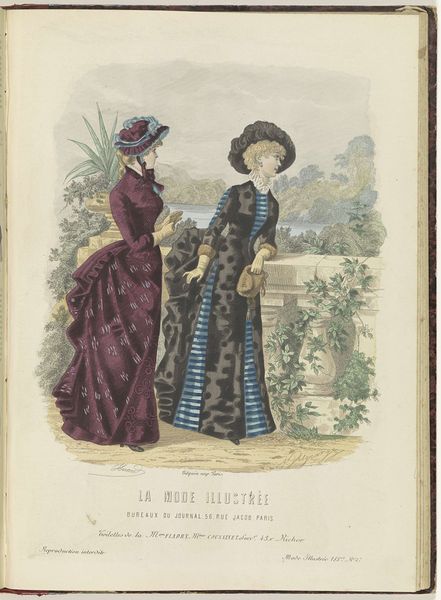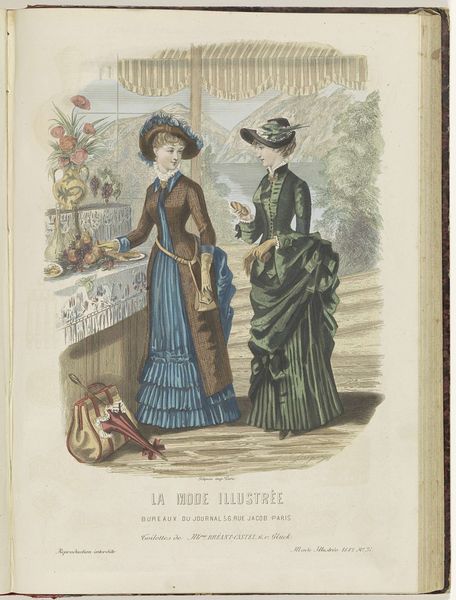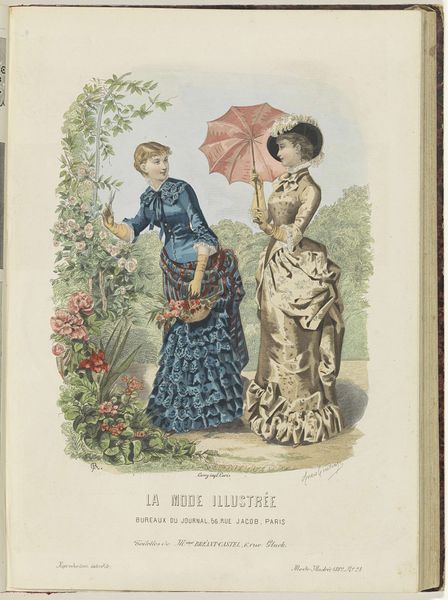
Dimensions: height 360 mm, width 252 mm
Copyright: Rijks Museum: Open Domain
Curator: Immediately, I’m struck by the sheer ornamentation – it feels like a visual feast of lace and ribbons. Editor: And it literally is, in a way. Here we have an 1883 print from "La Mode Illustrée," a French fashion magazine. These publications were influential in shaping ideals of femininity and class. The specific title here is "Toilettes de Mme Coussinet..." followed by the number of the issue. It's attributed to Charles Rabouille. Curator: Fashion plates like this are fascinating for the amount of textile work on display. Look at the details on the blue dress! All the gathered fabrics, layers of lace. This wasn't simply about aesthetic presentation. It represented a significant labor force involved in textile production. The choice of materials—silks, cottons transformed into lace—reflected not only the season’s styles, but also the infrastructure required to produce them on such a grand scale. Editor: Absolutely. The image itself operated within a sophisticated media landscape. Consider its function: to both depict and create desire. Fashion magazines offered women aspirational lifestyles, but also reinforced prevailing social norms. These prints helped solidify the haute couture industry based in Paris at the time. Furthermore, printed media was carefully curated. The magazine itself, a commercial object, had a very specific distribution that impacted its reach and ability to influence audiences. Curator: And those constraints are important to remember when discussing this era of design history. I see an intense material investment, particularly within the upper classes who likely commissioned such elaborate pieces to be produced, reflecting the tastes and material abilities of their position in society. It is crucial to ask, then: What conditions afforded the materials to be accessed in order to produce fashion items? Editor: Right! The image of effortless elegance actually involved a whole network of makers, distributors, and consumers, all influencing the image we now analyze over a century later. I see a document of capitalism at play—a snapshot of both beauty and industry working together to maintain the established norms of Parisian society. Curator: Agreed, these fashion prints aren't just about pretty dresses. They tell us a great deal about production, class, and aspiration. Editor: And the power of imagery to shape our perceptions. It’s been insightful viewing it from these interwoven perspectives.
Comments
No comments
Be the first to comment and join the conversation on the ultimate creative platform.

